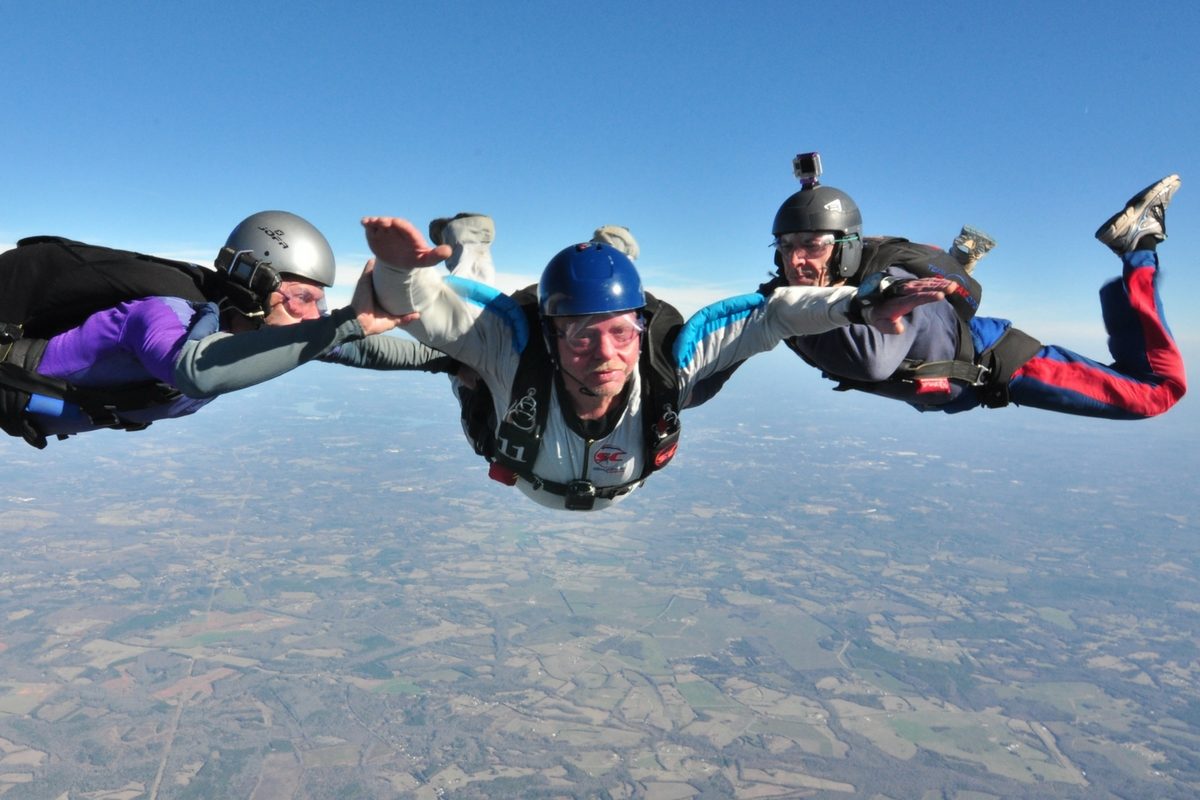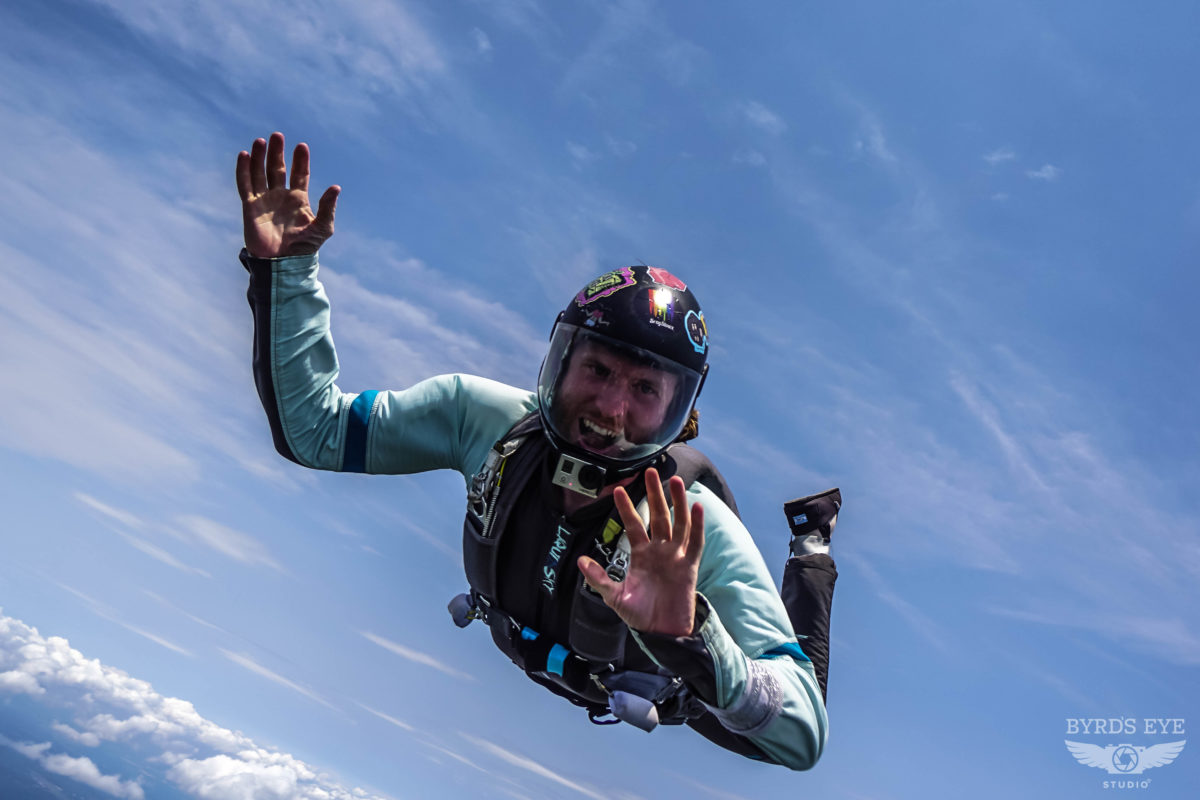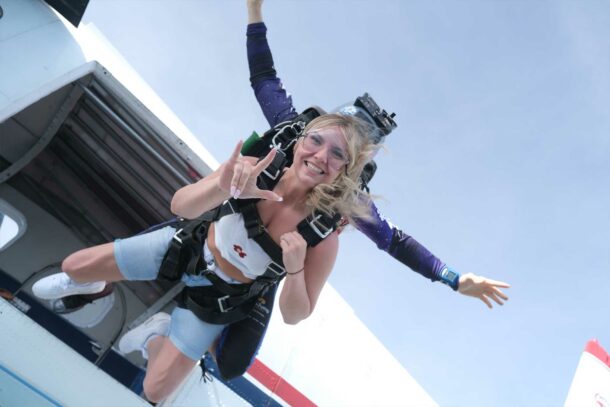How Many Jumps Do You Need for a Skydiving License?
Friday, January 8, 2021
What Does it Take to Skydive Solo?
Different routes may lead to the same destination, but in the case of how many jumps for a skydiving license, it’s not so much the path but the number of steps along the way that may vary. Is skydiving certification on your to-do list for 2021? Let’s get you headed in the right direction.

How Long Does it Take to get a Skydiving License?
A myriad of factors can influence your journey to your A license: the number of previous tandem skydives you have made, the frequency with which you are able to jump, and your mental fortitude. While the length of time it takes to get a skydive certification will differ from person to person, there are a few standards that must be met when it comes to getting your A license.
How Many Jumps for a Skydiving License?
You must possess a minimum of 25 skydives to receive skydive certification. Though, by the time you reach that all hallowed A license, you may have accrued more. These jumps are accumulated through both an individual’s progression through AFF and through self-supervised skydives.
AFF (Accelerated Freefall) Explained
Accelerated Freefall (AFF) is by far the most efficient way to achieve skydive certification, and through over 34 years in operation, we have seen that this program also produces a more adept skydiver. In this program, students advance through eight categories of proficiency.

First Jump Course
The first step of the program is a comprehensive ground school that we aptly named a First Jump Course. During this course, you will learn a great deal, including, but not limited to, exiting the aircraft, determining altitude, correct freefall body position, skydiving equipment, parachute deployment, as well as steering and landing the parachute. Following your First Jump Course, you will go on a Skills Evaluation Tandem jump to show off what you’ve learned. Upon completion of this tandem jump, you will proceed forward on your AFF journey with your solo skydives.
Solo But Not Alone
Admittedly, the word solo is a bit of a misnomer, while you are sporting your very own parachute, you are not entirely alone. On many of these “solo” skydives, you are accompanied by a USPA Instructor. During each of these jumps with the instructor, your goal is to safely demonstrate the required skills for that category.
How do you Pass or Fail a Jump?
Each jump during your status as a student skydiver is aimed to teach you the skills you need to be a safe, competent skydiver. Before each jump, you will receive a ground briefing covering a particular skill. For example, this skill could be upper body turns, lower body turns, or instability maneuvers like front flips and backflips. In order to pass a jump and move on to the next one, you must satisfactorily demonstrate that skill in the air on your skydive.
Skydiving Solo (For Real)
After performing basic freefall skills and demonstrating that you possess the abilities and knowledge to skydive safely by yourself, you are cleared for self-supervised skydives. Once you are cleared for self-supervision, you truly can skydive solo!
At this time, you can also begin to work on advanced freefall maneuvers with the assistance of a USPA coach. Typically, jumpers will combine Coach jumps and self-supervised solo jumps to reach the 25 total jumps needed for skydive certification.
Though, 25 jumps are not the only requirement for a skydiving A license. To receive skydive certification, you must meet all of the freefall and canopy requirements on your USPA A License card, have exhibited them on jumps throughout your progression with your instructors and coaches, have learned to pack a parachute, and demonstrated knowledge on the ground through written and oral exams. It doesn’t end at an A License, find out what you can do with each skydiving license.

How do you Stay Current Skydiving?
Skydiving is all about mitigating risk. One of the ways we do this is by jumping frequently and often in order to develop smart muscle memory. You’d be surprised how much you can forget in a short amount of time. According to the USPA Skydiver Information Manual, a student skydiver must make a skydive every 30 days. If the 30-day time limit is exceeded, the student will be required to make at least one skydive under the supervision of an appropriately qualified instructor. In some cases, this may mean repeating the maneuvers from the jumper’s last skydive before advancing. Find out how long a skydiving license lasts for each license type.
Skydive Certification is Just The Beginning
The skydiving A license opens up a world of possibilities and opportunities for advancement. As soon as you get your skydiving certification, you can start to work toward the other skydiving licenses and ratings. Each of which will afford you the ability to do more.
Honestly, there’s an entire big, bright sky out there just waiting to be explored. All great journeys begin with just one step. So, whaddaya think? Are you ready to take yours?
Related Article: How Easy is it to Learn to Skydive
Copyright © 2024, Skydive Carolina, All Rights Reserved.
DropZone Web Design & Marketing by Beyond Marketing, LLC





